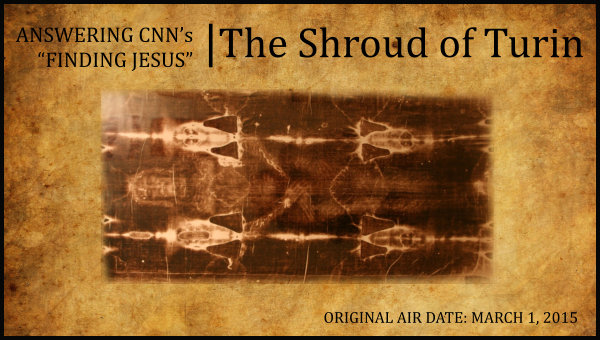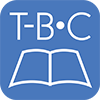By Tyson Thorne

A couple weeks ago CNN started a series of “investigative” pieces about our Lord called “Finding Jesus”. When I first saw it advertised I wondered if it might be good material to address here at Think-Biblically.com, until I saw the first episode was on the shroud of Turin. I’ve never been too enamored with the shroud throughout my Christian life because it isn’t mentioned in the Bible, and if it isn’t mentioned there how important can it be, really? What it lacks in biblical importance, however, it makes up for in cultural significance. Like it or not, people talk about the shroud and everyone has a point of view.
The Shroud’s first appearance is in April of 1349 at a time when artifacts are of particular interest to the Catholic church. There is some evidence, circumstantial at best, that may indicate the Shroud’s existence previous to this date. The shroud has a colorful history of possession among Catholic knights and royalty for the next 125 years or so.
In 1502 it becomes known that a cult of the Shroud exists and is led by the current owner Duke Amadeus IX. It is this group that repairs the shroud after a chapel fire threatened its existence. This is one reason why I believe so few true artifacts remain from of Jesus’ life; humanity has a tendency to worship objects associated with the divine rather than divinity itself.
The shroud will tour around Europe for several centuries being moved by Catholic envoys for exhibitions, royal weddings and to protect it from war and invaders. It isn’t until 1933 when an examination of the shroud in sunlight reveals what was believed to be blood over the wounds of the crucified man in the image. Could this image not only be of Jesus but also include his actual blood? (It was determined in the 1980’s that the substance was indeed blood.) Answers were needed.
Answers wouldn’t start rolling in, however, until the 1970’s when the church finally decides to permit samples to be taken from the cloth. Among the revelations is that at some time in the shrouds past it was in Israel (proven from pollens found in the dust on the shroud). During a period of intense testing it is determined that the blood stains were made prior to the image which is consistent with the theory that the image is of Jesus. Further, one researcher determined that there was an image of coins laid over the eyes of the deceased that could be used to date the image to the first century. This work was sharply criticized by others but remains an important part of the story of shroud research.
In 1988 permission is finally granted to radiocarbon date the cloth; all three of the independent firms responsible for dating the cloth give a rough estimate of around the time of its first appearance. The shroud is immediately deemed a fake by world press. Yet in the early 1990’s it is suggested that the samples taken and dated were significantly contaminated by later pollen and dust artifacts that have thrown off the measurements and nullifies the radiocarbon dating results. The debate continues.
How did CNN’s 42 minute special handle the history and telling of the story? Surprisingly well and rather more dramatically than I had imagined. There are few errors in how they supposed Joseph of Aramethea obtained the right to burry Jesus, but overall the representation of events were accurate. You’ll learn more of the shrouds history from this article than from their report, but they bring in an interesting angle toward the end that provides the first real evidence that the shroud may indeed be much older than 1349. Another artifact, a face cloth called the Sudarium whose first mention in antiquity is made in the 4th century AD, has bloodstains that match those on the shroud. Both the head cloth and the shroud had to have been made at the same time.
The special is worth one’s time to be sure, the debate over the shroud’s authenticity may not be. In my opinion, by testifying that the shroud is authentic before others, puts one’s personal testimony about Jesus at risk. For example, suppose I tell my co-workers that I believe the shroud is authentic and is evidence of Jesus’ resurrection. What happens if the shroud is later proven a fake? My coworkers might then reject everything about what I believe, including that Jesus is God. On the other hand, if I truthfully admit that that it is impossible to be certain about the artifact and it is later proven a fake, then no harm is done. And if the shroud is found to be authentic one day, it only reinforces the message about Jesus as well.
The lesson here is to not become distracted by extra-biblical teachings and artifacts. We know that the Bible contains everything we need to have complete faith in Jesus and it deserves our attention and discussion far more than any cloth.
Next: Episode 2
|
|
